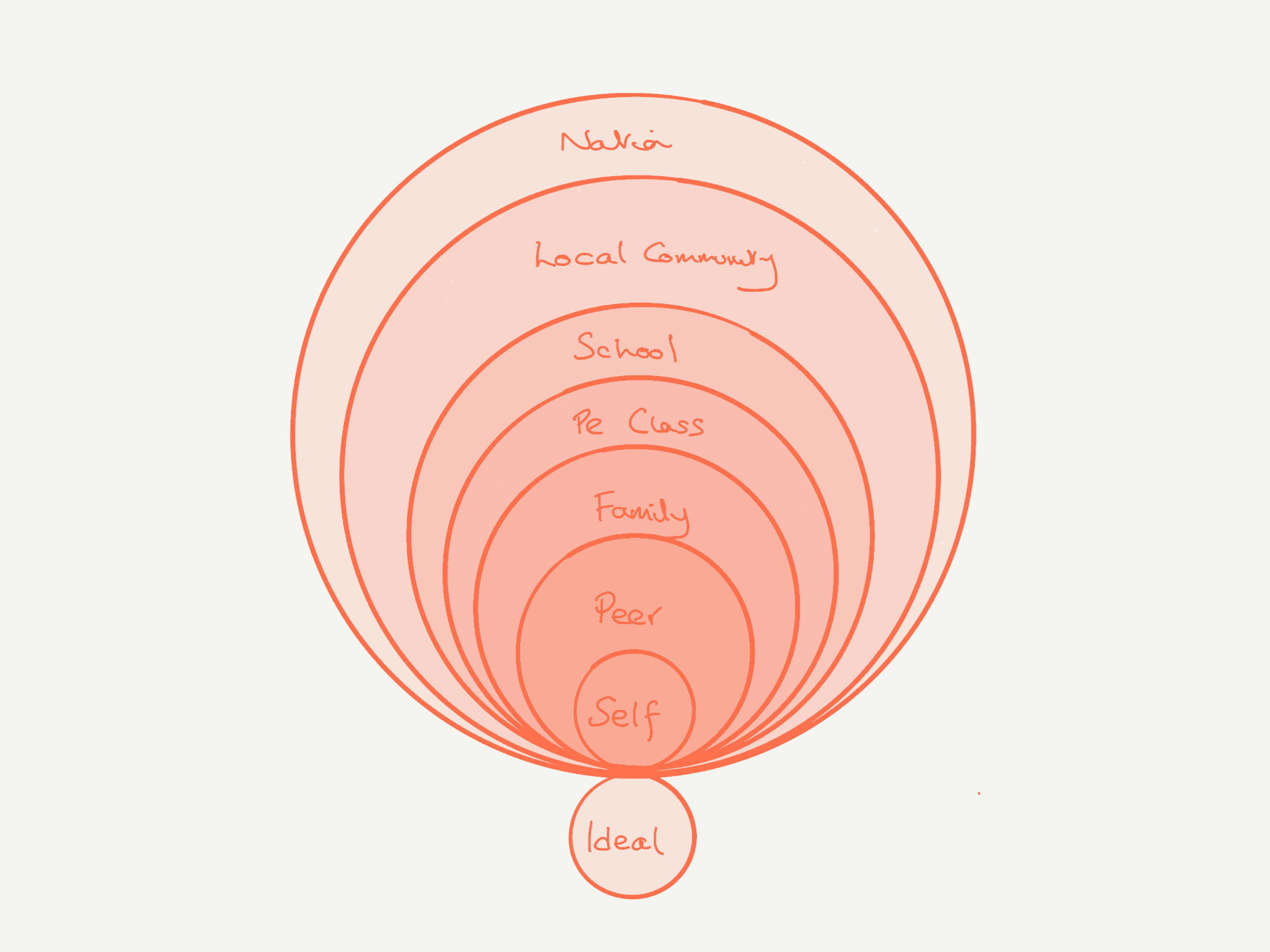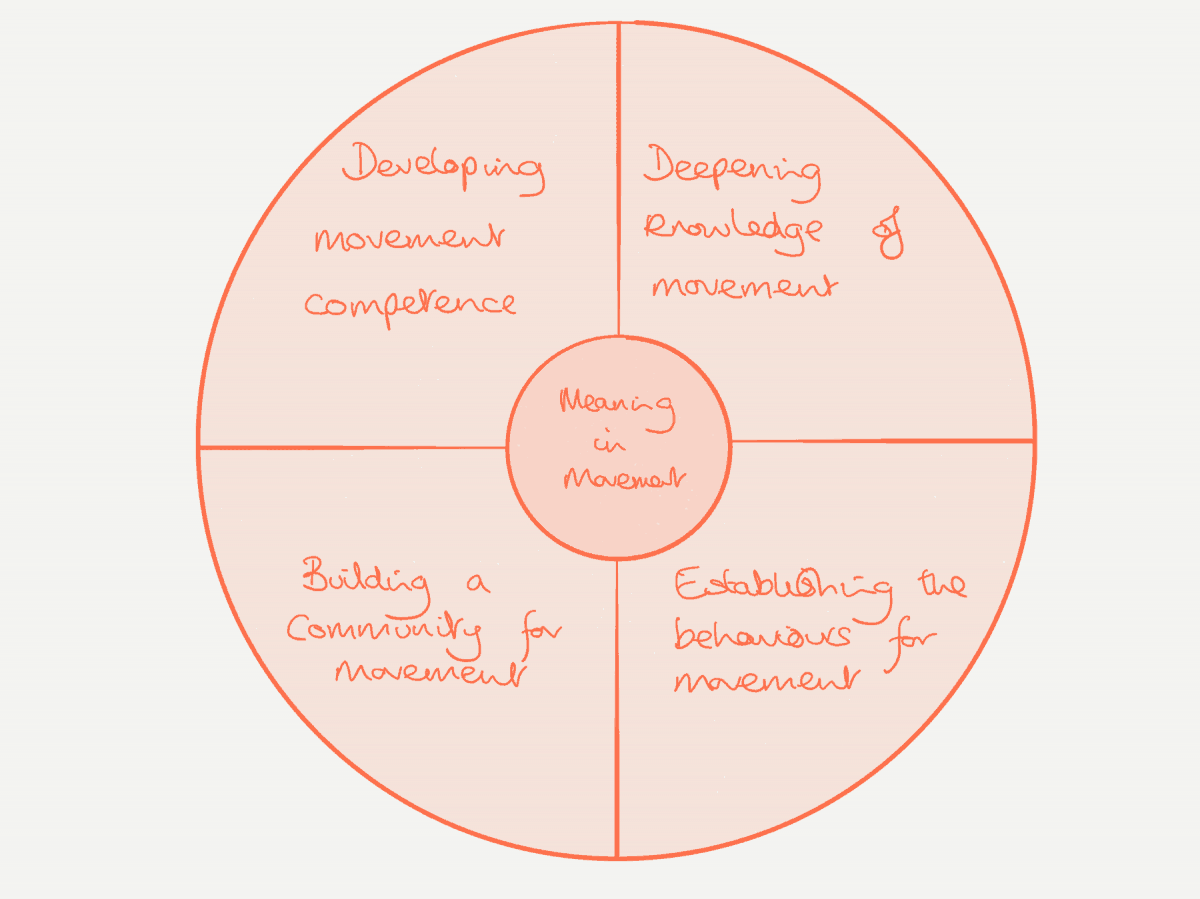The parts of our PE curriculum that I find the most difficult to teach are establishing behaviours for movement (Affective Domain) and finding meaning in movement. Whilst basic sports psychology may have the potential answers for the former, I continue to struggle with the latter as it isn’t one that can be taught. It isn’t as simple as observing, judging the pupils needs and then finding a way to teach them what they need. Meaning will be unique to each child and will be shaped by the culture of movement that they experience. This made me think, “do I really know the movement culture and experience of the pupils I teach?” The answer was no, so for the last two weeks I’ve been trying to find out.
I adapted the ‘circles’ of Hierocles as a framework for my investigation. Hierocles was a Stoic philosopher who described practices for expanding our sense of affinity for others. I then began to use it as a tool to guide my questions. Not during teaching but in the moments between teaching. On the walk out to the school field for athletics. Whilst waiting in a line outside a classroom. In the dining hall. When on breaktime duty. On the bus to fixtures. I struck up a conversation about what their movement culture is currently and what might their ideal movement culture look like.

Self – what movement do they habitually do in their lives and why?
Peer – what movement do their friendship groups engage in and why?
Family – what movement does their family do? Do they join in?
PE Class – what are their perspectives of the movement culture within their PE class?
School – what are their perspectives of the movement culture within the school? (Out of PE but in school)
Local Community – what does their local community provide for them in terms of movement?
Nation – what do they think the movement culture is like in the country?
Ideal – if they had complete control over their own movement culture what would it look like?
If I’m honest most of the conversations were superficial as I doubt they never had to think about the type of movement culture they are in. I hope if I continue to ask these questions regularly I may get some deeper thinking and insight. However all conversations gave up some tasty tidbit of information. One conversation was very illuminating. Will, a boy in Year 10, talked about control. He made the point that he felt much of his experience of movement was a form of control by adults. He told me that he and some friends had gone to his local village council to ask if they would support a proposal to put in either a skate ramp or a out door parkour playground in some disused area. They had got the plans, costings, had viewed the village for potential sites, had fundraising ideas and then made a presentation. All but one of the council members said no. Their worry was that it would be a place for adolescents to drink and take drugs. Will told me that’s what teenagers do because there isn’t anything for them to do in the first place. The adults just don’t want it out in the open where they would then have to deal with it. It struck me that meaningful movement for Will would be one that gave him a sense of agency and autonomy. Perhaps PE might not be the best place to provide that, but we could at least provide an element of choice. It made me reflect on what I offered and how I taught it.
Maybe we need to start with those who are completely disengaged with movement. Find out what is it in their movement culture that is preventing them from finding meaning in movement. Ask them to communicate what their ideal movement culture might look like. This could potentially have two effects: that they see they mean more to us than just a target and number on a spread sheet and also we can see what tools might be able to provide them in moving their current culture to their ideal. For a PE curriculum to be meaningful and provide the right tools, it needs to be culturally relevant.
Perhaps trying to help find meaning in movement is a step beyond the PE Teacher’s ability (and remit). We have defined that our purpose of PE is to ‘provide the tools to allow children to move on their own terms’, perhaps meaning isn’t required to do that? In Andy Vasily’s podcast interview with Scott Kretchmar, Scott talks about ‘opening the kingdom’ for our pupils to find joy and delight in movement (meaning). Providing the tools for them to move from the shallow to the deep end of movement. Before we open that kingdom, should we know where they are now and what it might look like? Maybe the aim of helping finding meaning in movement is unrealistic, but getting to know the movement cultures that of your children and how they impact them might provide that key. If not the the time spent isn’t wasted. By starting a dialogue it provides us an insight into their perspective of movement and builds a deeper connection to them as they tell their stories, which could then be used to make better decisions and judgements when teaching PE.

